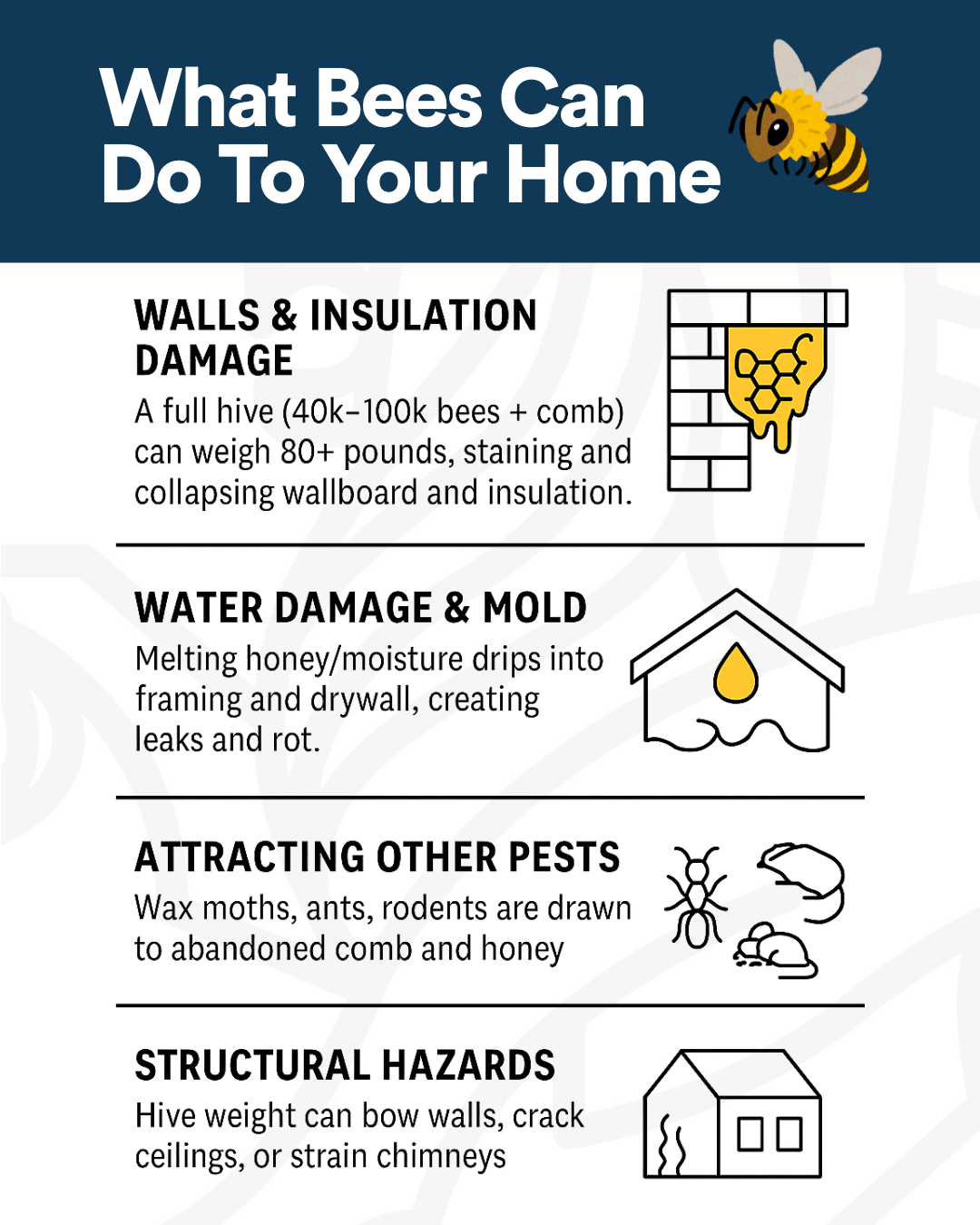Save the Bees (and Your Home!)
Recently during a routine tree removal at my home, an unexpected discovery was made: a massive honey bee colony hidden within the trunk. A local bee rescuer was called, and they safely relocated the hive—queen and all. It took several hours with his bee vacuum and chainsaw. It was fascinating to watch. While a colony inside a tree is hard to predict, bee infestations in homes are much more preventable. Let’s look at why it’s important to protect your home, and save the bees.
Why You Should Care About Bees
- Hidden property damage: Hives built inside walls, attics, or chimneys can contain 40,000 to 100,000 bees, along with comb and honey that together may weigh over 100 pounds. This hidden mass can soak insulation, collapse drywall, stain ceilings, and attract pests like wax moths or ants—causing extensive structural damage over time.
- Bee populations are collapsing: Researchers predict up to a 70% decline in U.S. honey bee numbers this year. These pollinators support $15 billion worth of crops annually, so rescuing even one hive makes a difference.
Relocate, Don’t Exterminate
Rather than calling exterminators, homeowners should contact humane bee relocation experts. Here’s who to call in St. Louis:
- Faust Bee Ranch: Combines beekeeping expertise with structural repair services—ideal for home restoration after removal. Located in Eureka.
- Bee Found: A local nonprofit offering free swarm or colony removal throughout St. Louis—no pesticides used.
- Isabee’s: Beekeeping Beekeeping supply shop with classes, extracting services, and consulting, plus local honey. Located in Fenton. They can connect you with a removal specialist.
- Eastern Missouri Beekeeper Association: Whether you need a swarm removed or have a cut-out situation, they have resources to help!
How to Prevent Bee Infestations
- Inspect attics, eaves, vents, behind siding, and around chimneys regularly for tiny entry holes.
- Seal gaps with caulk or install mesh screens—especially in spring and early summer.
- Keep outdoor garbage closed and eliminate standing water.
- Fill carpenter bee holes in wood after treatment to prevent reuse.
- If you notice swarms or buzzing, call a professional bee relocation service—don’t attempt removal yourself.

What Happens During a Professional Removal
- Assessment: Professionals locate hive, inspect entry/exit routes, evaluate structural impact.
- Live handling: Using tools like a bee vacuum, they gently transport bees—queen included—to hives beeremovalsource.com.
- Hive removal: Comb and debris are removed; cavity cleaned and sealed to deter pests.
- Repairs: Some providers offer structural and cosmetic restoration.
- Relocation: Bees are relocated to apiaries or sanctuaries—a win for pollination and the ecosystem.
Final Thoughts
Bee infestations in homes can quietly cause thousands of dollars in damage—and when spotted, they’re an opportunity to protect both your home and vital pollinators. In St. Louis, several trusted services offer humane, professional bee rescue and hive removal, ensuring safety for people and insects alike.
Make it your mantra: see a hive, call a rescuer—not an exterminator. Your home and our bees will thank you.



